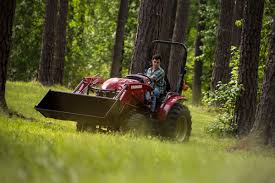A Quick Guide To Tractor Specifications & Features
Congratulations on buying a new tractor, but the stickers with numbers need to be clarified. This is why it’s important to fully understand them: Just like your car’s engine size, the tractor’s specifications reveal how much power it has.
Knowing these parameters can help you choose the ideal tractor for your farm’s size and requirements. An appropriate tractor saves money, prevents issues, and completes the task efficiently. Let’s understand the tractor specifications together.
Key Tractor Specifications
Horsepower
Let’s understand it with an example: imagine a horse dragging a cart, but its speed depends on its power. Similarly, a tractor’s horsepower (HP) is comparable to the strength of that horse. The more challenging the work it can handle, the greater the HP.
Consider working with heavy machinery or ploughing across huge areas of land. But everything doesn’t end with HP. A tractor with less horsepower may do tasks proportional to its power. Next, we’ll look at other performance-influencing elements, but for now, keep in mind that horsepower is like your tractor’s muscle; it tells you what type of activities it can handle.
PTO
PTO stands for Power Take-Off. It is a mechanism in tractors that passes the mechanical power from the engine to the other pieces of equipment. PTOs are commonly used in trucks, commercial vehicles, Tractors, and agricultural implements. They can power numerous attachments, including mowers, rotavators, disc harrows, water pumps, and balers.
How PTO HP relates to Horsepower
Tractor horsepower is the power of the engine, but some power tractor uses internally. So, PTO horsepower tells how much power reaches the attachment. Thus, a high-horsepower tractor may have a lower PTO horsepower, which is normal. Finding the right PTO HP for your equipment is crucial.
Types of PTO
PTOs come in several varieties; some, like a live PTO, function only when the tractor is moving. These are useful for tasks like mowing. Others are (independent PTO) which lets you operate implements while your tractor is parked, making them ideal for powering stationary machinery.
Hydraulics
Hydraulics is a mechanical function that utilises the force of liquid pressure to operate. But what is the role of hydraulics in tractors? Let’s discuss it. Hydraulics function similarly to a super-strong oil system, assisting in tractor strength. But hydraulics in a tractor uses an oil pump instead of water. Tractor hydraulics raise and lower equipment on your 3-point hitch, such as raising a plough or adjusting the mower deck.
Imagine it as power steering for your implements! Hydraulics may also control machines with moving parts, such as a wood splitter or a manure spreader. The hydraulics control the oil flow, which adjusts the tool’s speed and power.
3-Point Hitch
A 3-point hitch, often called a three-point linkage, is a mechanical component that connects equipment such as ploughs and cultivators to agricultural or industrial tractors. The hitch’s three points form a triangle or the letter A. It passes the load and strain of the attachments to the tractor’s driving wheels, providing extra traction.
Categories of Hitches
Three-point hitches are divided into three categories, each increasing in size due to the tractors’ HP. To ensure a proper fit, they are available in several sizes (I, II, III, etc.). Category I is the most compact and best suited for smaller farms and farm equipment. For compact tractors, you can check the Powertrac 434 if you are looking for new ones. As the category number increases, so do the size and strength.
A Category IV hitch on a large tractor can hold enormous amounts of equipment. Incompatible sizes might cause issues, so purchase tools that fit your tractor’s hitch category. Some tractors may have adjustable hitches or provide connector sleeves to connect various categories.
Combustion Capacity
Similarly, like car engines, tractor engines also need air and fuel to work. The entire amount of space inside the engine cylinders where combustion and burning take place is called Combustion capacity. It is measured in cubic centimetres.
The higher the combustion capacity, the more air and fuel the engine can consume and burn. CC often equates to higher horsepower, allowing the tractor to perform more difficult tasks.
The higher the ignition limit, the more air and fuel the motor can consume and consume. CC frequently likens to higher pull, permitting the work vehicle to perform more troublesome assignments.
However, just as a huge eater isn’t necessarily the strongest, a high CC engine cannot guarantee anything. Other factors also influence the outcome. If you are looking for tractors with more CC, you can check the Farmtrac 45 Tractor price. This tractor is 45 HP rated with 3 3-cylinder 2868 CC engine.
Conclusion
Finally, understanding tractor parameters allows you to make well-versed decisions. Knowing a tractor’s horsepower, PTO options, hydraulic capabilities, and 3-point hitch categories can help you guarantee it meets your farm’s demands and size. Remember that choosing the correct tractor will save your time and money in the long run.

